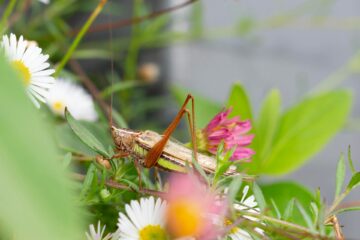Imagine having a fresh supply of aromatic herbs right at your fingertips, even during the colder months or if you lack outdoor gardening space. Growing herbs indoors is not only a practical solution but also an enjoyable and rewarding hobby. With a little know-how and the right techniques, you can master the art of growing herbs indoors and elevate your culinary creations. Here’s how to get started.
1. Choose the Right Herbs
Selecting the right herbs is crucial for successful indoor cultivation. Here are some popular herbs that thrive indoors:
- Basil: Known for its vibrant flavor, basil adapts well to indoor conditions.
- Mint: Mint varieties, such as spearmint or peppermint, are prolific growers and can add a refreshing twist to your dishes.
- Parsley: This versatile herb is easy to grow indoors and adds a fresh taste to salads, soups, and more.
- Thyme: With its woody fragrance, thyme is a popular choice for indoor herb gardens.
2. Find the Perfect Location
Herbs need ample sunlight to grow and thrive. Find a sunny windowsill or a well-lit spot in your home that receives at least 6-8 hours of direct or indirect sunlight per day. South or west-facing windows are ideal, as they receive the most sunlight.
If your chosen spot lacks the required light, you can supplement with artificial lighting. LED grow lights are energy-efficient and provide the optimal spectrum for plant growth.
3. Choose the Right Containers
Selecting the right containers is vital for successful indoor herb gardening. Ensure that the containers have good drainage to prevent overwatering. Opt for pots with drainage holes or use a layer of gravel or pebbles at the bottom of the container to facilitate drainage.
Consider the size of the herb plants when choosing containers. Most herbs don’t require large containers, but they should have enough room for roots to grow. Additionally, using separate pots for each herb allows for individual care and prevents the spread of diseases.
4. Provide Proper Watering and Drainage
Overwatering is a common mistake in indoor herb gardening. Herbs prefer slightly dry soil rather than constantly wet conditions. Allow the top inch of the soil to dry out between waterings. Be mindful of the herb’s specific moisture requirements and adjust your watering routine accordingly.
Ensure that the pots have proper drainage to prevent water from accumulating in the soil. Avoid allowing the herbs to sit in standing water, as this can lead to root rot.
5. Use Quality Potting Soil and Fertilizers
Invest in good quality potting soil that provides proper drainage and is enriched with organic matter. Avoid using garden soil, as it may contain pests or diseases.
Herbs grown in containers may need supplemental fertilization. Use a balanced organic fertilizer or a slow-release fertilizer specifically formulated for potted plants. Follow the recommended dosage instructions to provide the necessary nutrients for healthy growth.
6. Harvesting and Pruning
Harvesting your herbs promotes bushier growth and ensures you have a steady supply for your culinary endeavors. When harvesting, remove a few leaves or stems at a time rather than cutting back the entire plant. This allows the herb to continue growing.
Regular pruning helps maintain the shape and encourages new growth. Pinch off any wilted or yellowing leaves to maintain the health of the herb plant.
7. Rotate and Refresh
Indoor plants can benefit from a little rotation. Every few weeks, rotate your herb pots to ensure all sides receive equal sunlight. This helps promote even growth and prevents lopsided plants.
Additionally, refreshing your herb garden by replanting or starting new herbs every few months allows you to have a constant supply of fresh and healthy herbs.
Growing herbs indoors is a satisfying and enjoyable way to enhance your culinary skills and bring nature into your home. With the right selection of herbs, proper care, and a little patience, you can master the art of indoor herb gardening and enjoy the bountiful flavours they bring to your kitchen.
Keep on top of your gardening with our free online journal
Our free online tool allows you to organise your ideas and garden plans and help you be as efficient as possible in the garden.
Sign up now

